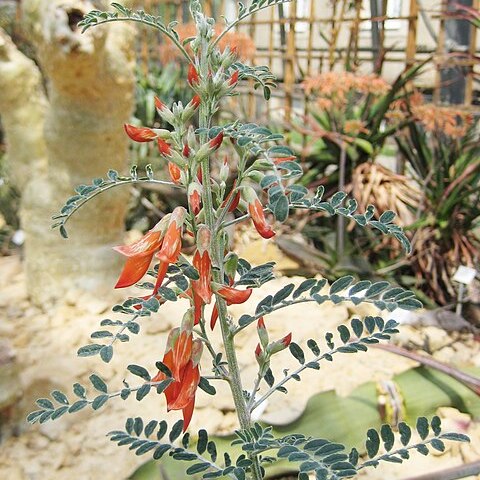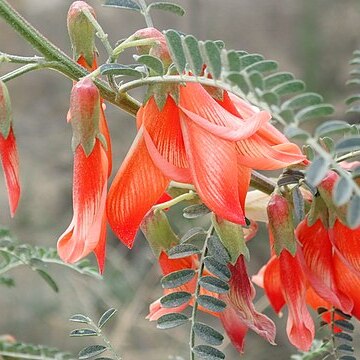Erect or sprawling shrublet, 0.3-1 m tall. Leaves pinnately 13-21-foliolate, leaflets oblong, variable in size, mostly thinly hairy above. Flowers few to many, in short axillary racemes, showy, bright red. Pod stalked, greatly inflated, glabrous, papery.
Single-stemmed shrublet to 1.5 m. Leaves imparipinnate, leaflets oblong to elliptical, obtuse, glabrous or thinly hairy above, greyish green. Flowers to 50 mm long, bright red. Pods large, inflated, papery, glabrous.
A sprawling small shrub. It can grow 1 m tall. The leaves have 13-21 leaflet stalks. The leaves are oblong. The flowers are 50 mm long and bright red. The pods are large and inflated.


